Eileen Cooper OBE RA
on her Art Journey, Painted Figures,
Highlighting the Female Body,
Art and Emotion,
and us all being "Under the Same Moon"

Art can be a reflection of ourselves, our lives and our emotions.
Eileen Cooper is a master of painting figures, drawing us into her world through movements, the everyday and emotions. Her subject matters are autobiographical, but her work also echos and reflects a shared sense of our everyday patterns and feelings. There is an empathetic attachment felt towards her figures and portraits. Through her painted life, Eileen Cooper's art connects us to our lives and our emotions, as well as having affinity to earth, nature and humanity.
Her sculptural figures are strong and bold yet poetic and tender. This duality can also represent life in general. We often reach out to art to help decipher our emotions, shared experiences and daily life. Eileen Cooper's art allows that conversation to occur. With her colours, brushstroke movements and painted feelings, sensations of the real and imaginary come through, as well as expressive warmth and observations on life and sentiments.
Taken with her art figures, we asked Eileen Cooper to share with us her art journey and art thoughts...
What first drew you to art?
Honestly, as a child it was an escape. I never ever dreamed I would become an artist.
You studied at Goldsmiths College and then at the Royal College of Art, what was the atmosphere like during your time at those art schools?
Both were incredible places, especially Goldsmiths in 1971, a new beginning under the direction of Jon Thompson. My generation were supported in our studies by government grants. This changed my life, I was the first person from my family to study in higher education. I have to say though, as a young female painter, there was a near total absence of women teaching in art school and female artists were hardly visible in the wider art world. The word ‘feminism’ was beginning to be used and during that decade huge changes were achieved.
Do you think the art world is improving for women artists?
Yes, absolutely, there is no comparison to the art world I first encountered. However, there’s a long way to go and a lot of ground to be made up both for women and other groups that have been overlooked and even ignored.

Woman Examining Her Shadow. 1989-90. Oil on canvas. 152.5 x 167.5 cm
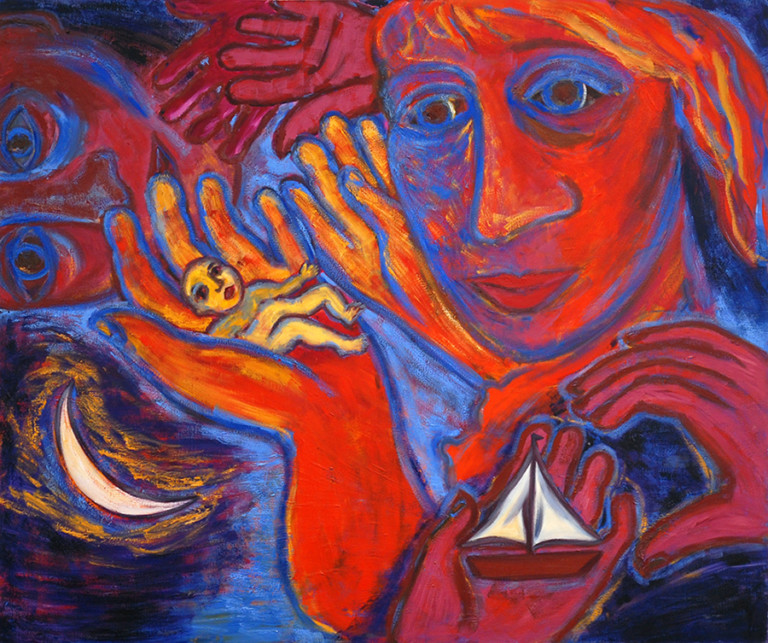
Gift. 1985. Oil on canvas. 167.5 x 198cm
Many of the themes you portray in your artworks are autobiographical, looking at identity, motherhood and the everyday. There’s also a symbolic element to your work, does that happen instinctively to fuse both real and more mysterious components together?
It’s pretty much instinctive, although no one lives in a vacuum, so I will say that I’m engaged in an ongoing dialogue with the visual world, culture, story telling etc.
I’ve never been able to escape the autobiographical but I hope my work is more allegorical than anecdotal.
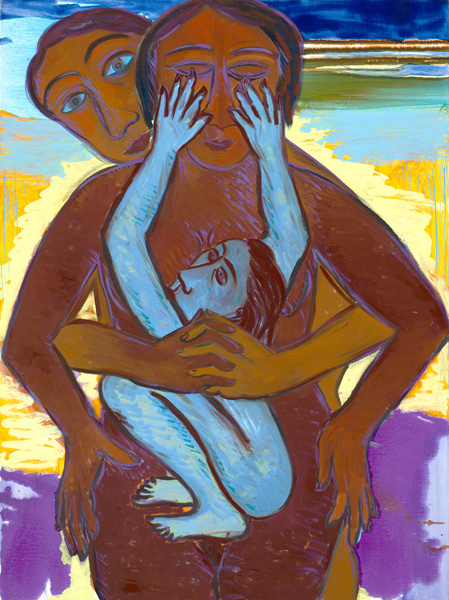
Looking Out and Looking In. 1997. Oil on canvas. 121.9 x 91cm
.jpg)
Ritual. 2019. Oil on canvas. 92 x 61cm
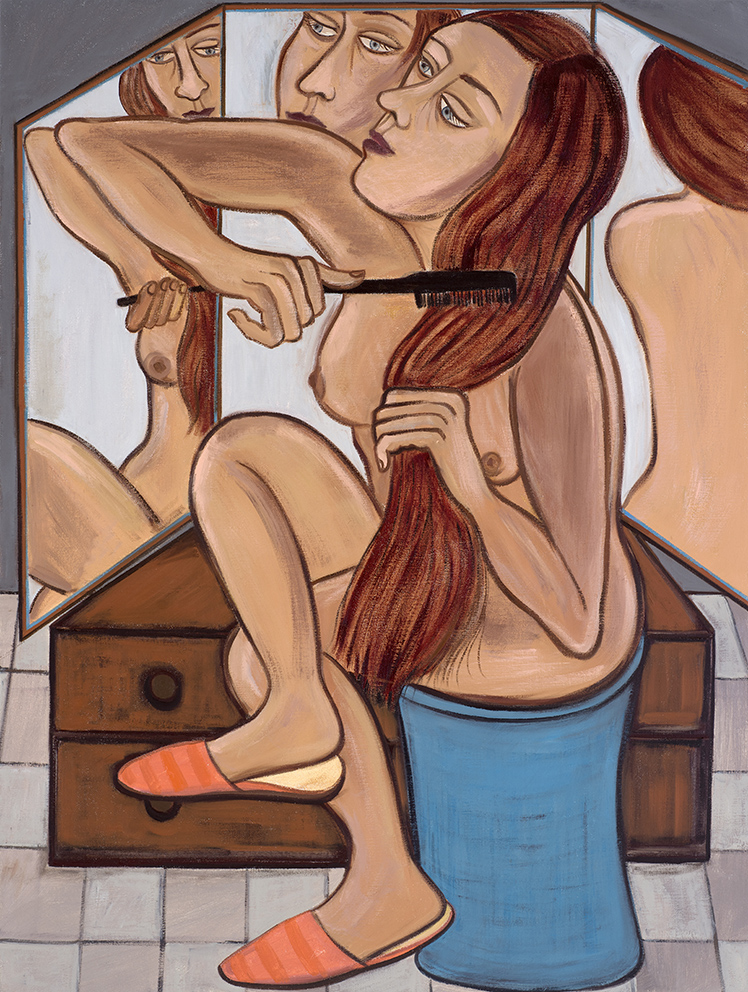
Personal Space. 2019. Oil on canvas. 122 x 92cm
Your figures are both poetic and monumental, what is it about the figure that inspires you to depict it?
The female body is central to my practice, it’s always my starting point. My obsession goes beyond inspiration, it’s more existential than that.
There’s a sense of much emotion coming out from within the figures you paint, as if they are looking for something, or an answer to a question, so are there underlying subject matters or emotions that you want the viewer to search for, through your art?
Tough question…..I don’t over analyse. I think the emotion is achieved from constant reworking and restating the line, pinning things down whilst keeping it fluid.
Everyone is looking for something, answers and new questions.
I’m happy for the viewer to interpret my work, I like that quote ‘the viewer brings the final piece of the puzzle’.
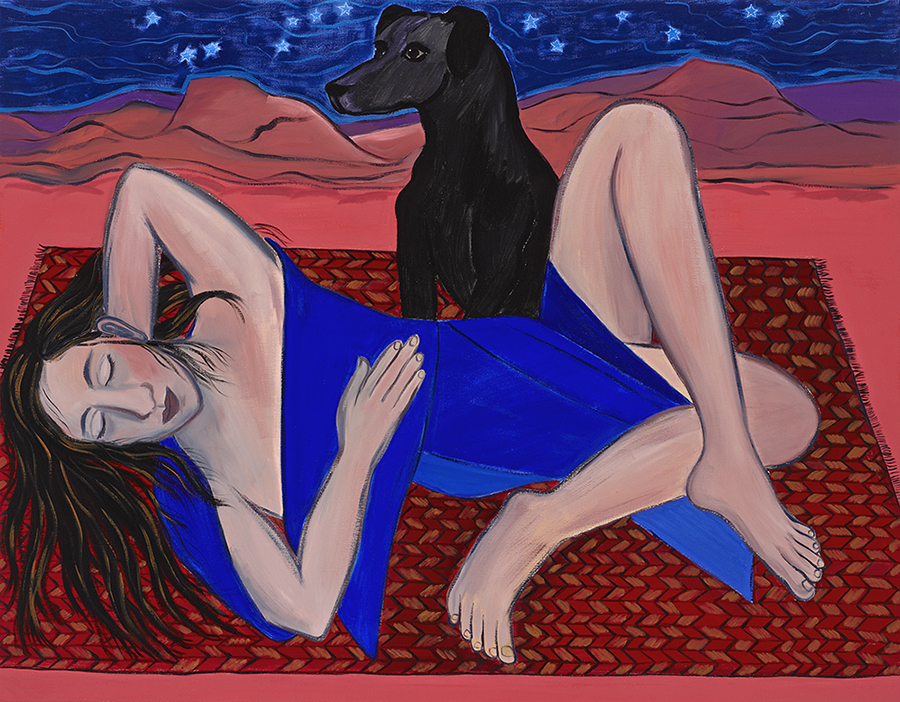
Ad Astra. 2011. Oil on canvas. 106.5 x 137cm
Trees, forests, landscape, plants, flowers feature in a lot of your work, what does nature evoke for you?
Perhaps the way I use nature and animals in my work brings an element of something ‘other’. I love the possibility of the mysterious and the magical being suggested.
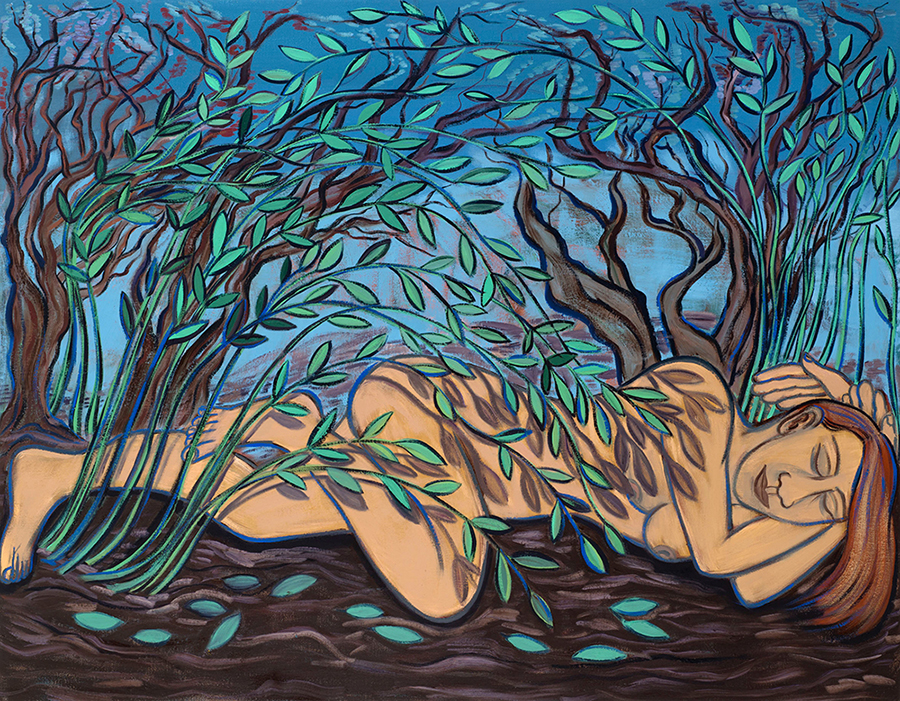
Memory. 2018. Oil on canvas. 106 x 137cm

Willow. 2016. Oil on canvas. 153 x 122cm
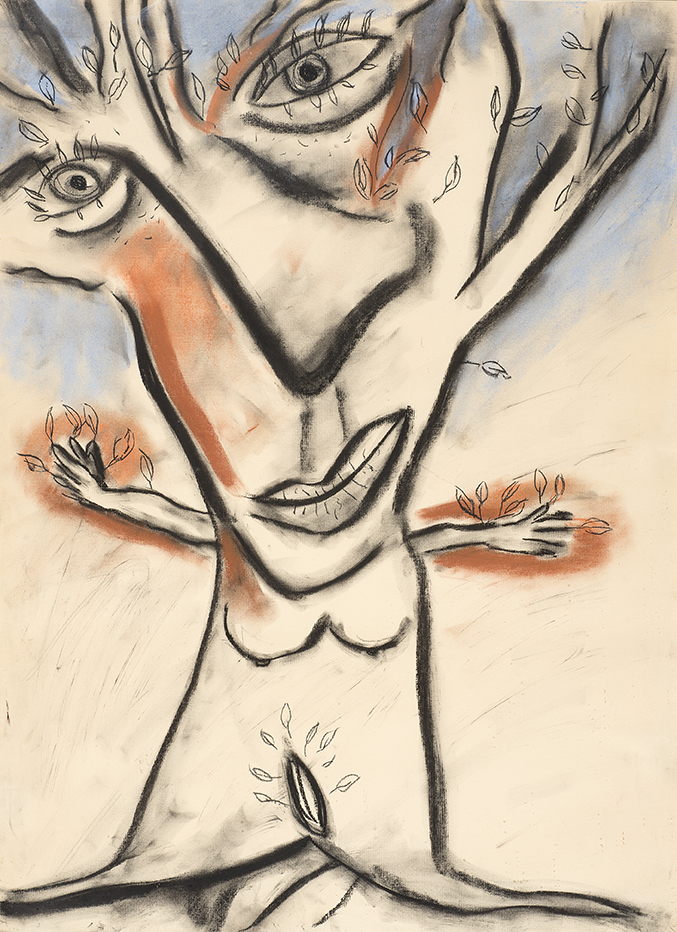
The Sad Tree. 1983. Conte, charcoal and pastel on paper. 63.5 x 47cm
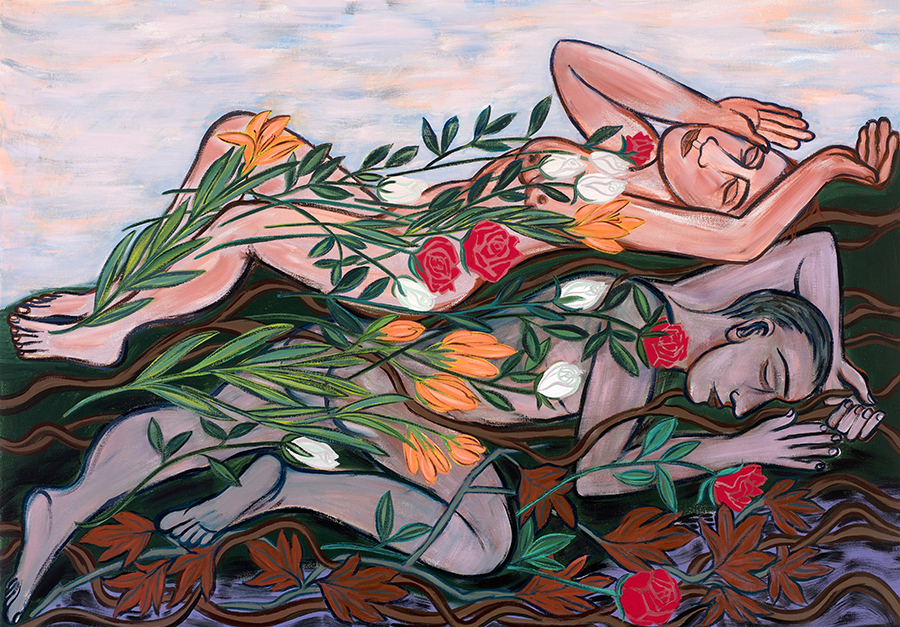
Summertime. 2016. Oil on canvas. 106 x 152cm
How did you feel being elected as a Royal Academician in 2000, and as the first female Keeper of the Royal Academy in 2010?
I was thrilled to be elected an RA, recognition by other artists means a lot. Also it’s an independent organisation which I believe in, with a fully funded art school at its core, a living Academy supporting the next generation.
Being Keeper was more complicated. I needed to really ‘step up’ and to put myself in the spotlight, which I’d never been interested in. I learned so much about myself through doing it. First and foremost though, I learned huge amounts from my students.
Can you tell us a bit about your body of work “Under the Same Moon” and how your visit to Lebanon impacted it?
The beautiful title of this set of work feels unifying, was that the intent?
I had never visited the Middle East East and having the opportunity was absolutely inspiring. Strangely though, in making the group of works for ‘Under the Same Moon’ I realised that many of the influences were already in my consciousness… and in that sense culture and shared experiences are unifying. I’ve always been stimulated by art from the past and from other cultures. I felt at home in Lebanon, I didn’t explore the wider region as much as I’d liked, as I was based in Beirut. I hope to return and see my lovely friends out there again.
The history and symbolism of the Cedar trees and the Lebanese respect for them played a big part in this group of work.
I did intend the title “Under the Same Moon’ to suggest unity.
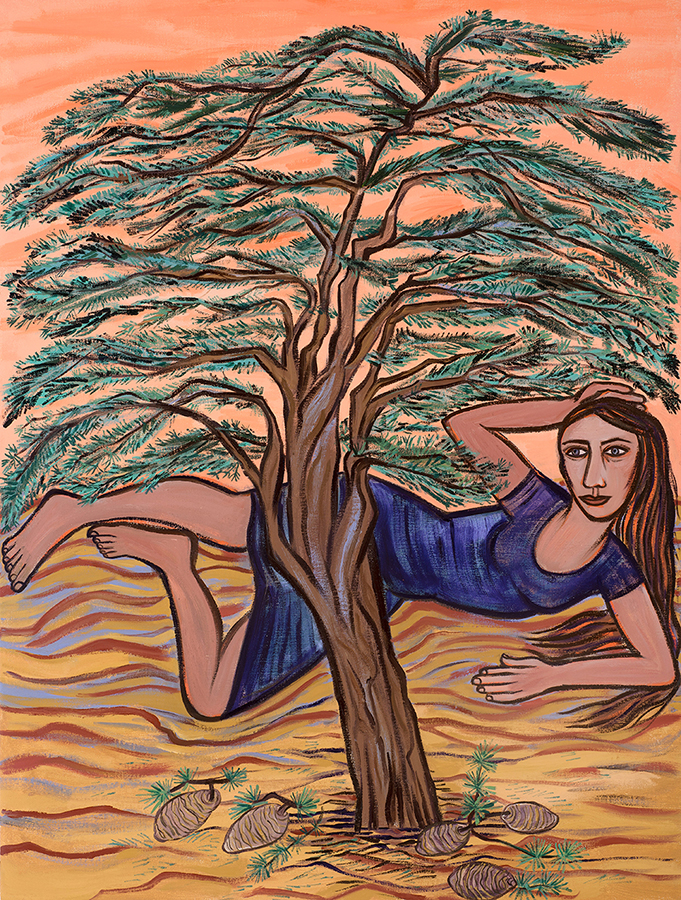
The Cedar Tree. 2017. Oil on canvas. 122 x 92cm
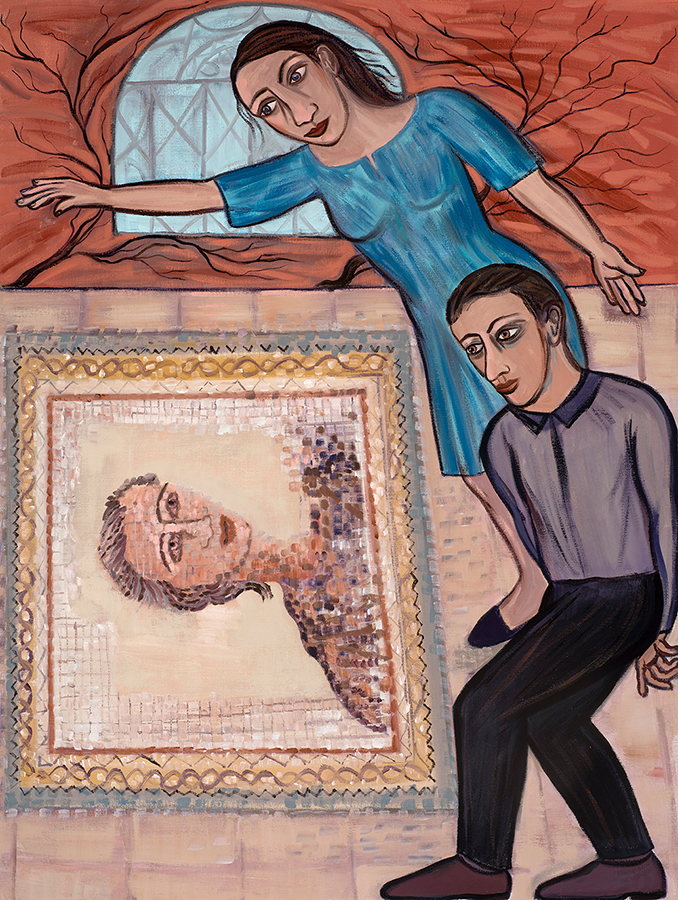
Bacchus. 2017. Oil on canvas. 122 x 92cm
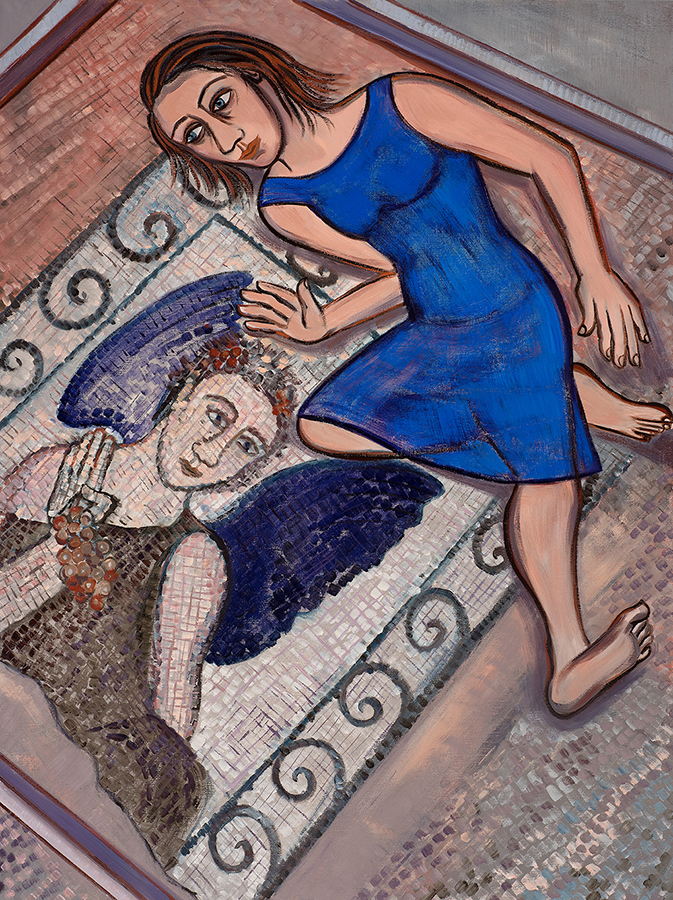
Under the Same Moon. 2017. Oil on canvas. 122 x 92cm
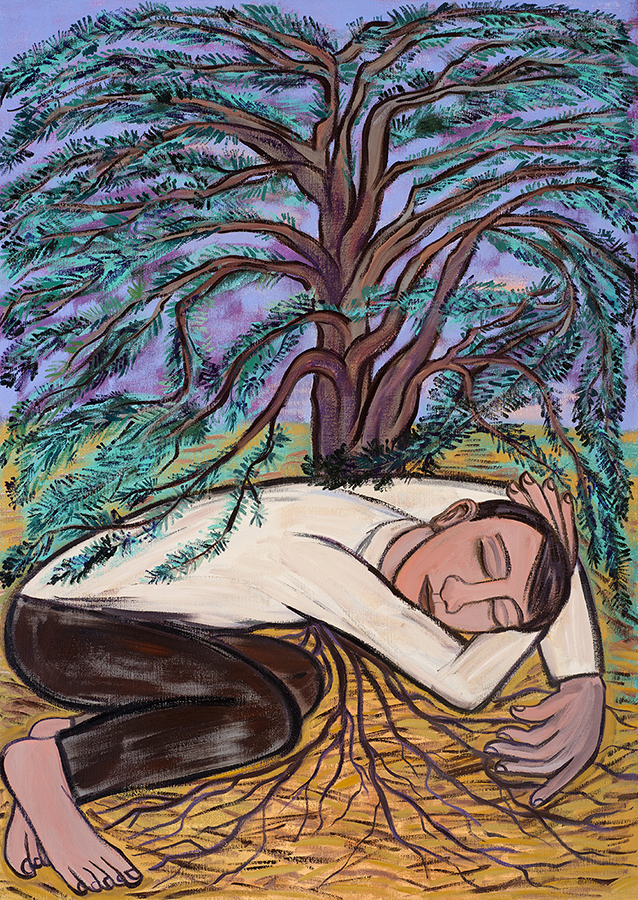
Peace. 2017. Oil on canvas. 107 x 76 cm
Do you think art can aid in changing the world, and can it help unite people?
Certainly art and culture can speak about our shared experiences and common ground. Art can inform people as well, opening us up to our differences. Am I optimistic that it can change the world? That’s more difficult…it certainly can’t do any harm.
What are you working on next and what are your hopes for the future?
I’m always trying to make things challenging for myself, keep my practice alive, explore new processes and materials and to constantly re-evaluate my work. I’m painting at the moment, hovering between a return to the more imaginative, narrative aspects of my work and the objective approach that developed from drawing portraits over the last 3 years.

Serene. 2017. Charcoal, pastel, gouache and acrylic. 76 x 56cm
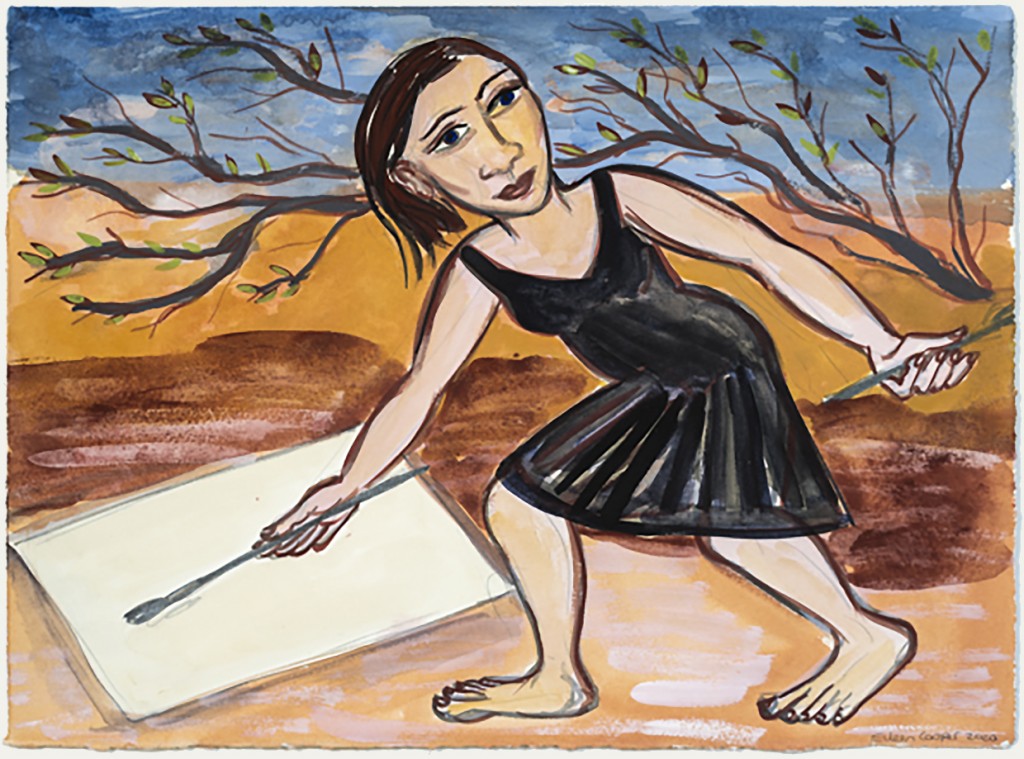
In the Landscape. 2020. Gouache and ink. 28 x 38cm
Eileen Cooper first studied at Goldsmiths College (1971-74) and then at the Royal College of Art (1974-77). She went on to teach at a wide range of art schools including St Martin’s, the Royal College of Art, City & Guilds in London and latterly at the Royal Academy of Arts. In 2000 she was elected a Royal Academician. From 2010-17 Cooper served as Keeper of the Royal Academy, one of only 4 officers selected from the 80 Royal Academicians, and with primary responsibility for the Royal Academy Schools, thereby becoming the first woman to be elected to this role since the RA began in 1768. Originally from the Peak District, Cooper has exhibited widely in the UK and internationally. Her work is held in many public and private collections such as the Arts Council Collection; the British Museum; Manchester Art Gallery; Mima, Middlesborough; New Hall Art Collection, University of Cambridge; the Royal Collection; Victoria & Albert Museum; Dallas Museum of Art, Texas; Kunsthalle, Nuremberg; Walpole Library, Yale University.She was made an Officer of the British Empire (OBE) for services to Art and Art Education in 2016. She is an Honorary Fellow of the Royal College of Art, and of Murray Edwards College, University of Cambridge, and was awarded an Honorary Doctorate from Southampton Solent University in 2014.
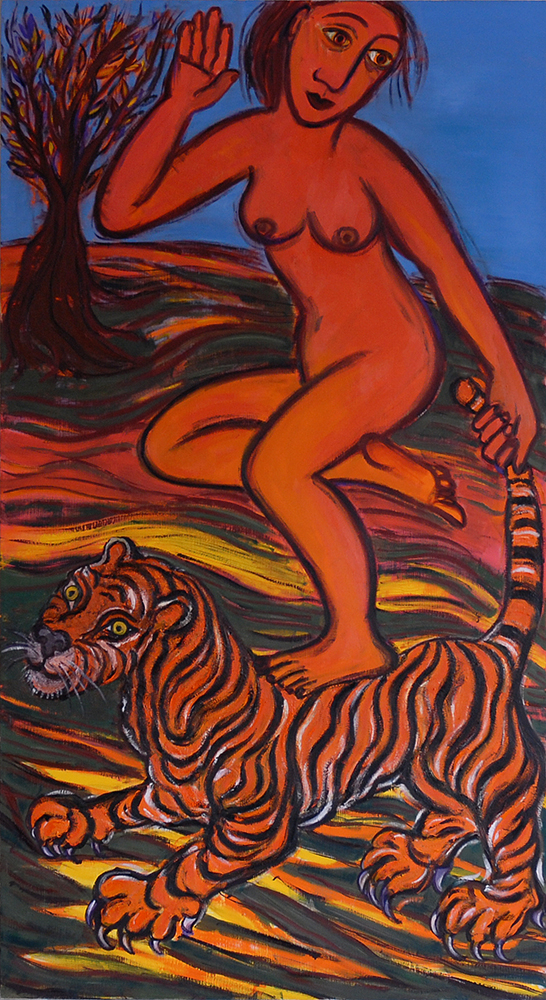
Tail of the Tiger. 2002. Oil on canvas. 168 x 91 cm
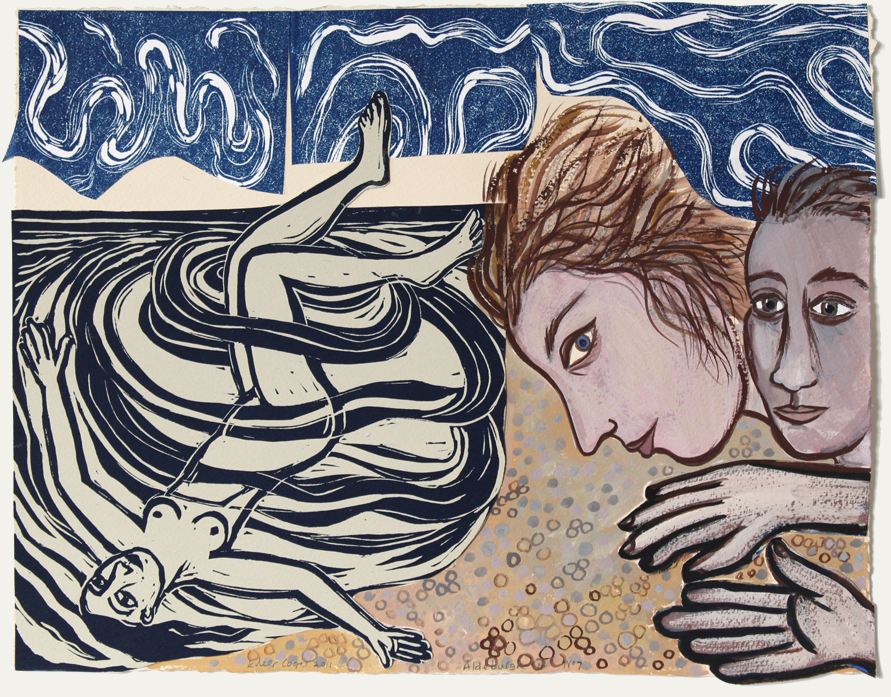
Aldeburgh 1. 2012. Collage. 28 x 38cm
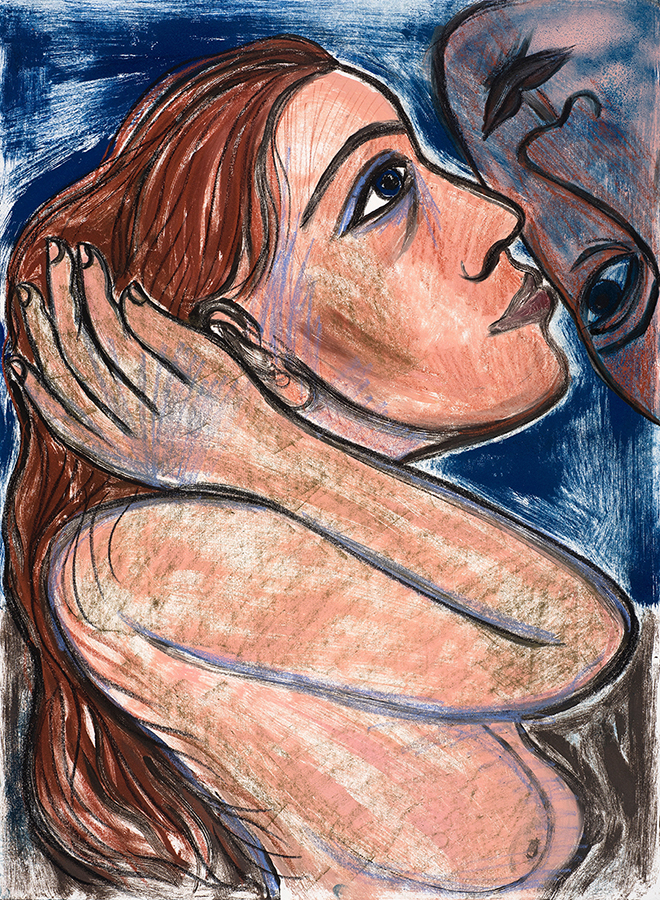
Echoes, Proposal. 2019. Monoprint with collage and pastel. 61 x 46cm
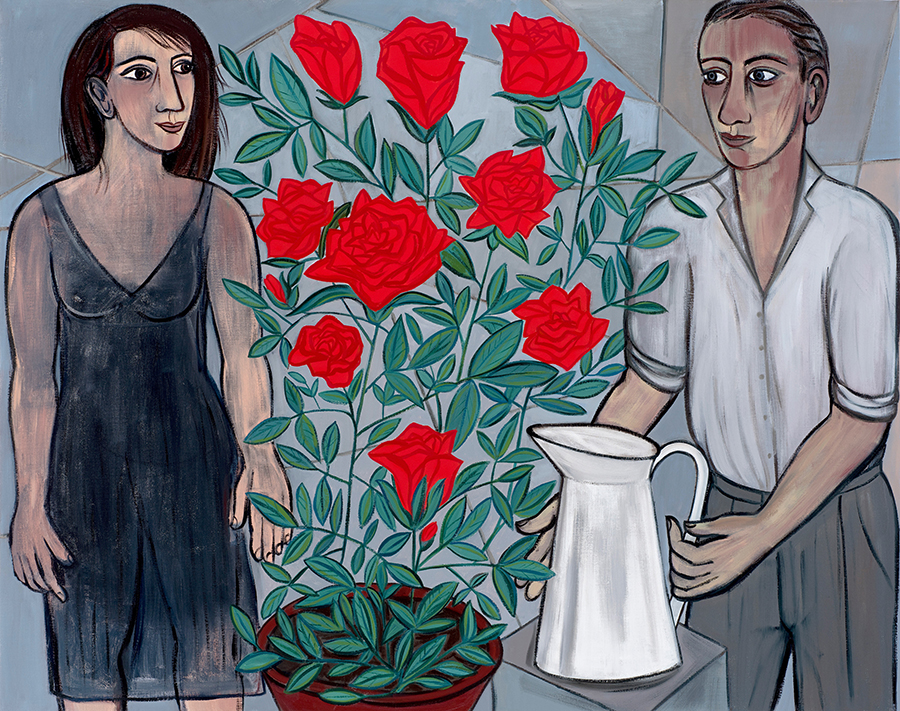
In The Moment. 2015. Oil on canvas. 122 x 152cm
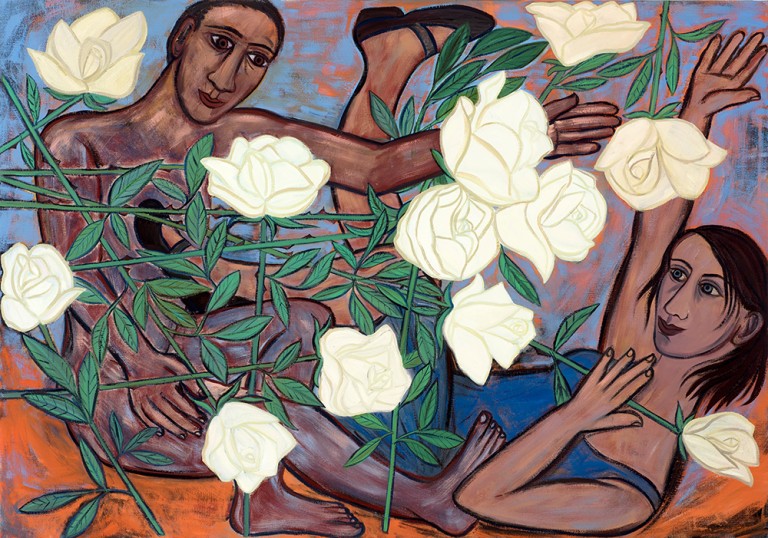
Love in Idleness. 2015. Oil on canvas. 107 x 152cm
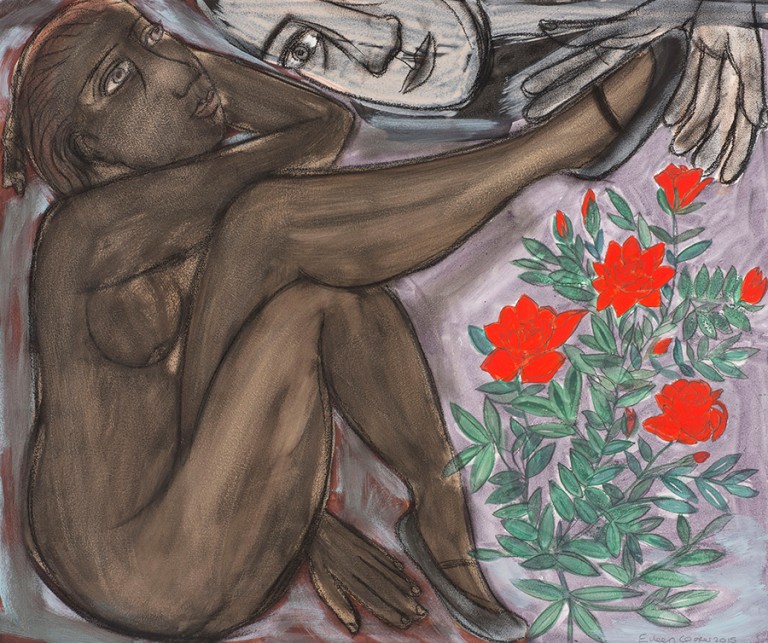
Good Year For the Roses. 2015. Acrylic, pencil, chalk and charcoal on board. 50 x 60cm
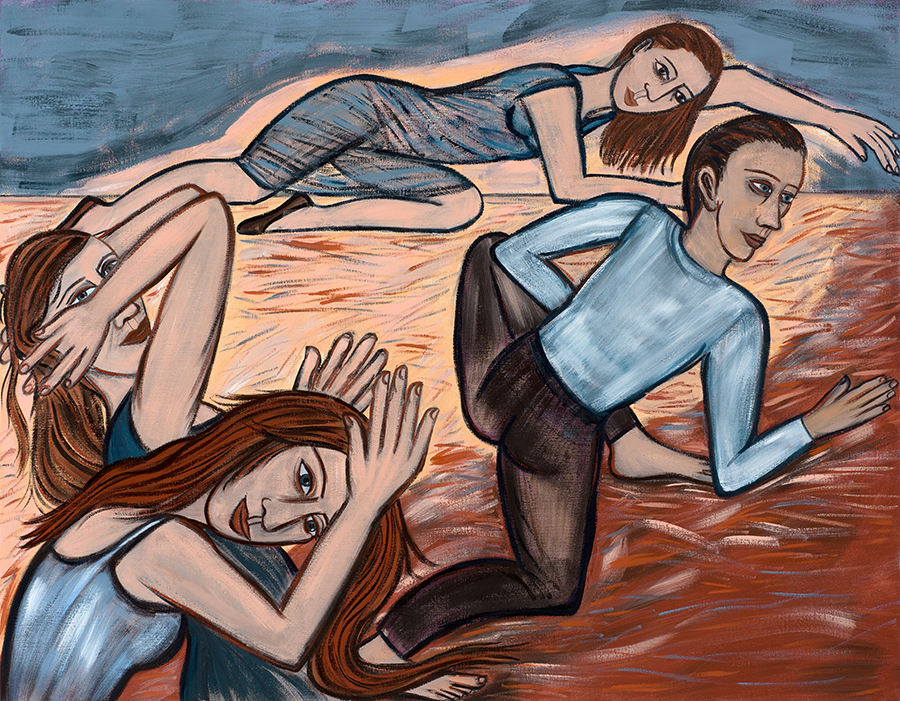
Darkness and Light. 2017. Oil on canvas. 107 x 137cm
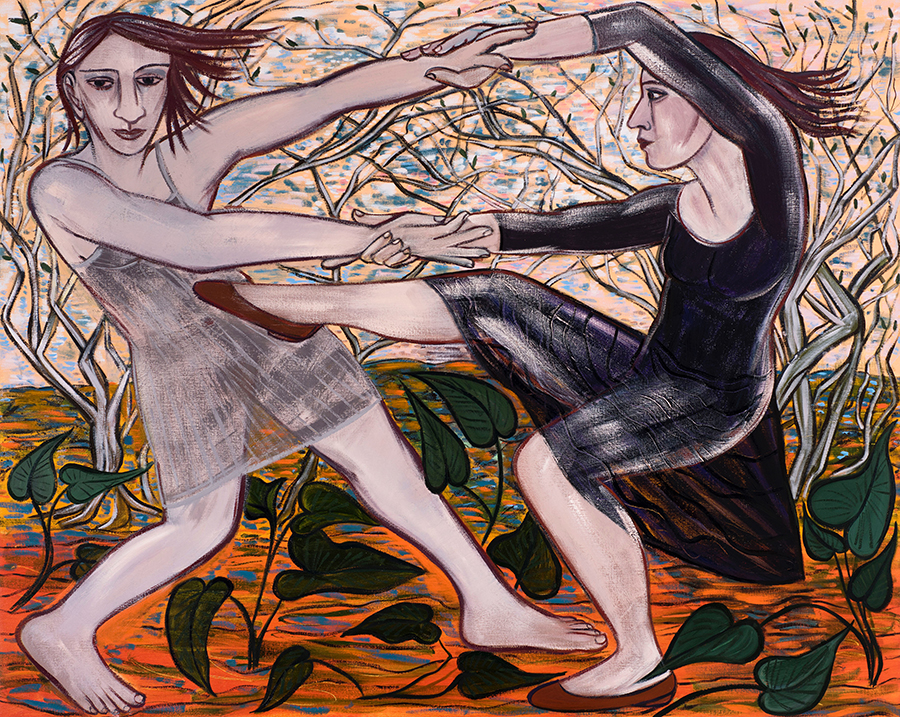
Perpetual Spring. 2016. Oil on canvas. 122 x 152cm
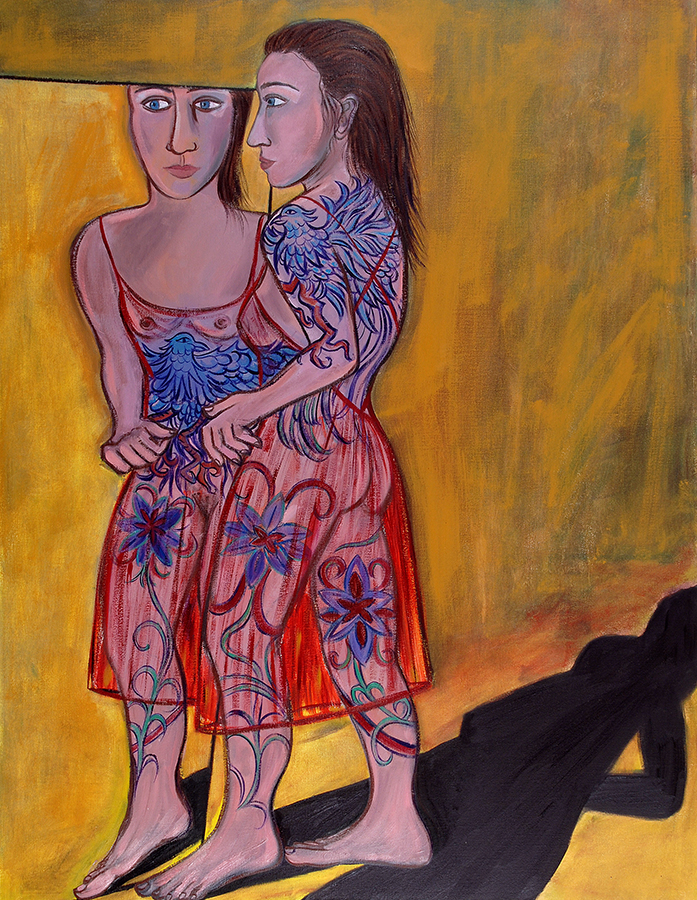
Second Skin. 2007. Oil on canvas. 137 x 107cm
